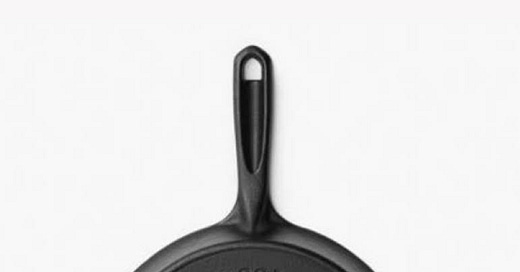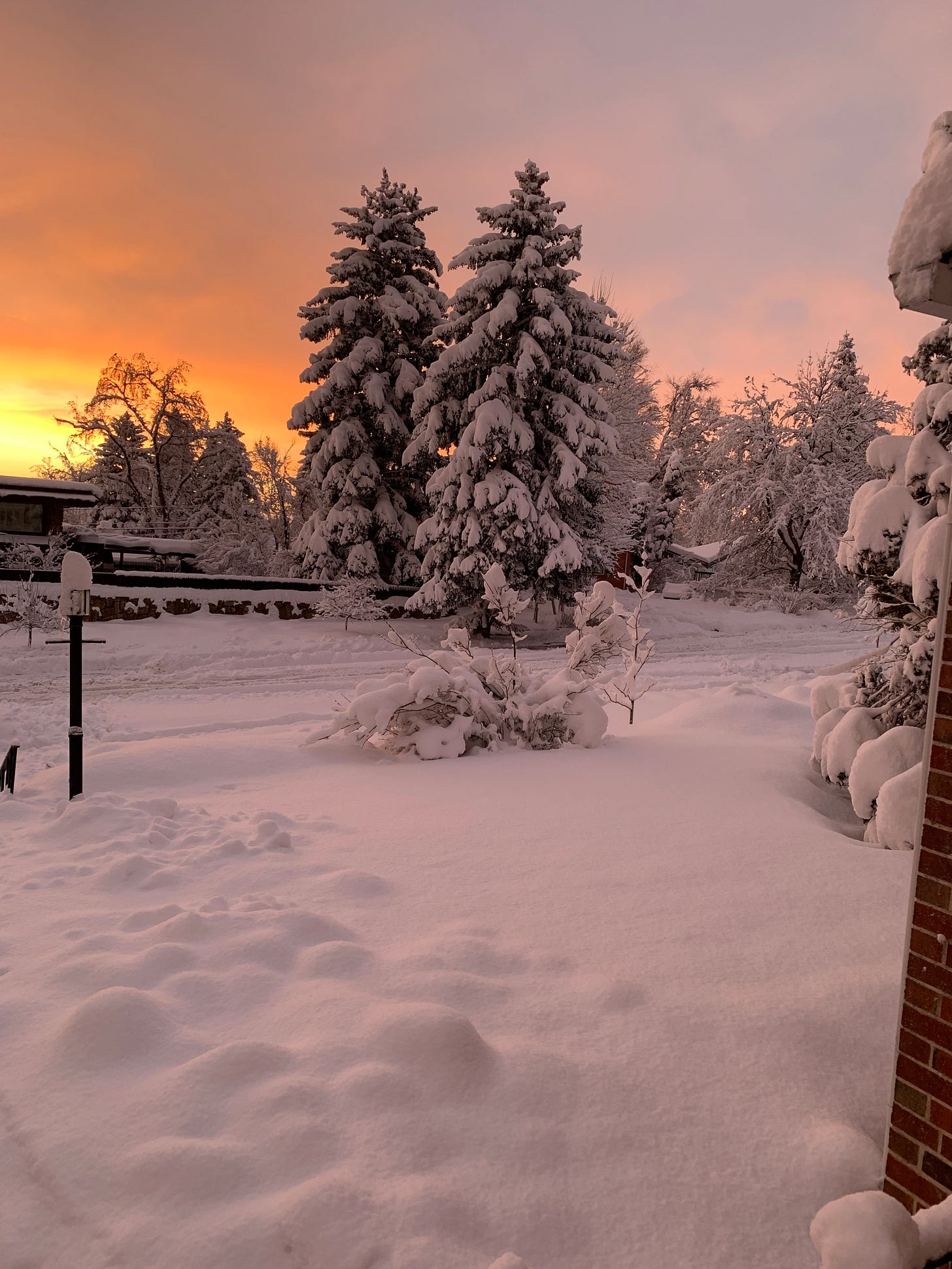The Field Company: A Cast Iron Skillet for the Cowboy in All of Us
May be cold up here but not in the kitchen --Karen
I grew up watching my Dad carefully wipe down his cast iron skillet after each use, no detergent, of course. The message that I got was that a cast iron skillet was to be cared for, a life long investment. I had read about The Field Company years ago but at the time there was a lengthy waiting list to purchase a skillet, so I moved on. I rediscovered the company a few months ago and remembering the review in the New York Times, I ordered an 8 inch skillet. When you order a skillet from The Field Company, they are passionate about teaching you how to season your pan. They send you instructions with the box, and they email you instructions as well. They offer a seasoning product which I recommend. I also got the leather handle glove which makes it easier to move the skillet over to the sink to rinse it out. I have to admit it was exciting starting from scratch with a cast iron skillet. At the time, we were in the middle of the pandemic so what better time to fall in love with your cast iron skillet.
These are well made skillets that are almost indestructible. I left the stove top burner on once with my empty skillet on top and came running back downstairs when I smelled heavy smoke. My pan looked charred on the inside. I contacted The Field Company, and they talked me through the steps to get it back in shape and now it truly looks beautiful again.
The Field Skillet is a lightweight, naturally non-stick cast iron skillet that works on any kind of stove top. They carry several sizes: 4, 6, 8, 10, 12 inch. They also sell a beautiful Dutch Oven.
The company was started by two brothers, Stephen & Chris Muscarella, who named the company after their maternal grandmother.
This is the rest of their story…
They started by taking one of their favorite vintage cast iron pans, a beautiful Wagner from the 1930s and visited some foundries. They were told that there was no way that a modern foundry could pour iron that thin. Not willing to accept that answer, they stumbled on a whitepaper called Thermophysical Properties of Thin Walled Compacted Graphite Iron Castings written by a material science professor in Europe. They emailed him and with his help, they were able to perform microscopic imaging to compare the graphite structure of vintage pans. Eventually, they visited his lab to learn how to make iron castings by hand—the way our favorite pans had been made over a hundred years ago.
While learning to pour iron by hand, they also learned why certain kinds of smooth surfaces never build up good seasoning and achieve cast iron perfection.They ended up with a kick ass product.
A lot of snow here in Colorado. Have a good week.






